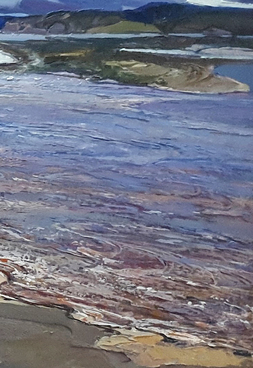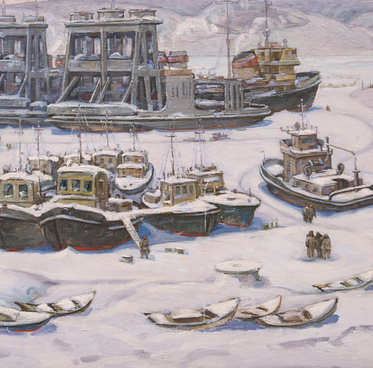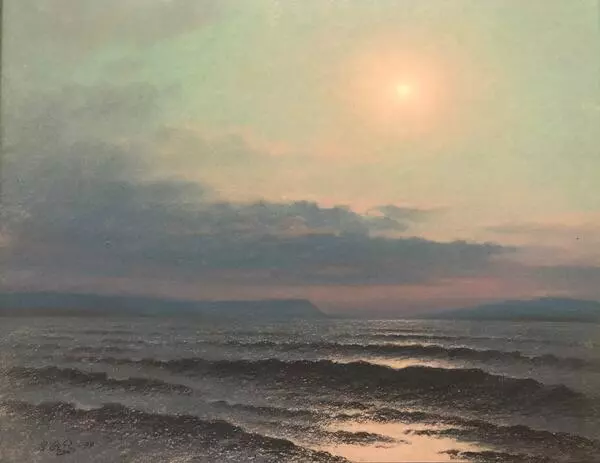Valery Yakovlevich Verenyov painted his early works with oil paints; later, however, he discovered pastel and, coming to appreciate the wide application prospect of this material, began to work with it exclusively.
Artists have long been striving to get pure paints, free from any adhesives. To make pastels, coloring pigments are milled and then used to form pastel sticks with the addition of a minimum amount of water (for dry pastels), oil or wax.
Pastel is equally applicable in both painting and graphics. In painting, multicolored small strokes are arranged side by side, imitating strokes or dots of color used in pointillism, or blended with fingers or using a soft brush. In graphics, the outlines are drawn in light strokes by the tip of a sharpened chalk and then highlighted with a flexible contour line, using the pictorial space of the paper sheet as another color accent.
In the late 1980s, Valery Verenyov came to the village of Novaya Tambovka to paint portraits of builders, who were going to build a nitrogen fertilizer plant and the city of Bonivur on those lands. The construction was subsequently frozen, yet the artist still decided to stay in the new place. Years later, he noted, “Here, both the air and the lighting are different. The colors… are brighter than in the city.” Valery Verenyov dedicated a lot of his landscapes to the area of Novaya Tambovka.
The painting “Dural in the Morning” is a great example of the wide range of pastel painting. The image of the sky — the favorite landscape motif of Verenyov — is the first thing to notice. It is the sky that occupies the prominent space on the canvas. Soft strokes make the picture look wholesome and airy at the same time. The lemon-orange hues hint at the sunrise coming. Its first rays are just beginning to shine through the dusk: the foreground and background of the painting are immersed in shadow, and only the center is illuminated. The clouds swirling over the river add a certain romantic touch to the whole image.
Pastel painting is also consonant with Valery Verenyov’s state of spirit, his sensitive and sentimental nature.
Artists have long been striving to get pure paints, free from any adhesives. To make pastels, coloring pigments are milled and then used to form pastel sticks with the addition of a minimum amount of water (for dry pastels), oil or wax.
Pastel is equally applicable in both painting and graphics. In painting, multicolored small strokes are arranged side by side, imitating strokes or dots of color used in pointillism, or blended with fingers or using a soft brush. In graphics, the outlines are drawn in light strokes by the tip of a sharpened chalk and then highlighted with a flexible contour line, using the pictorial space of the paper sheet as another color accent.
In the late 1980s, Valery Verenyov came to the village of Novaya Tambovka to paint portraits of builders, who were going to build a nitrogen fertilizer plant and the city of Bonivur on those lands. The construction was subsequently frozen, yet the artist still decided to stay in the new place. Years later, he noted, “Here, both the air and the lighting are different. The colors… are brighter than in the city.” Valery Verenyov dedicated a lot of his landscapes to the area of Novaya Tambovka.
The painting “Dural in the Morning” is a great example of the wide range of pastel painting. The image of the sky — the favorite landscape motif of Verenyov — is the first thing to notice. It is the sky that occupies the prominent space on the canvas. Soft strokes make the picture look wholesome and airy at the same time. The lemon-orange hues hint at the sunrise coming. Its first rays are just beginning to shine through the dusk: the foreground and background of the painting are immersed in shadow, and only the center is illuminated. The clouds swirling over the river add a certain romantic touch to the whole image.
Pastel painting is also consonant with Valery Verenyov’s state of spirit, his sensitive and sentimental nature.



